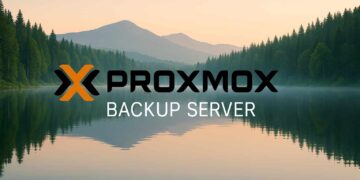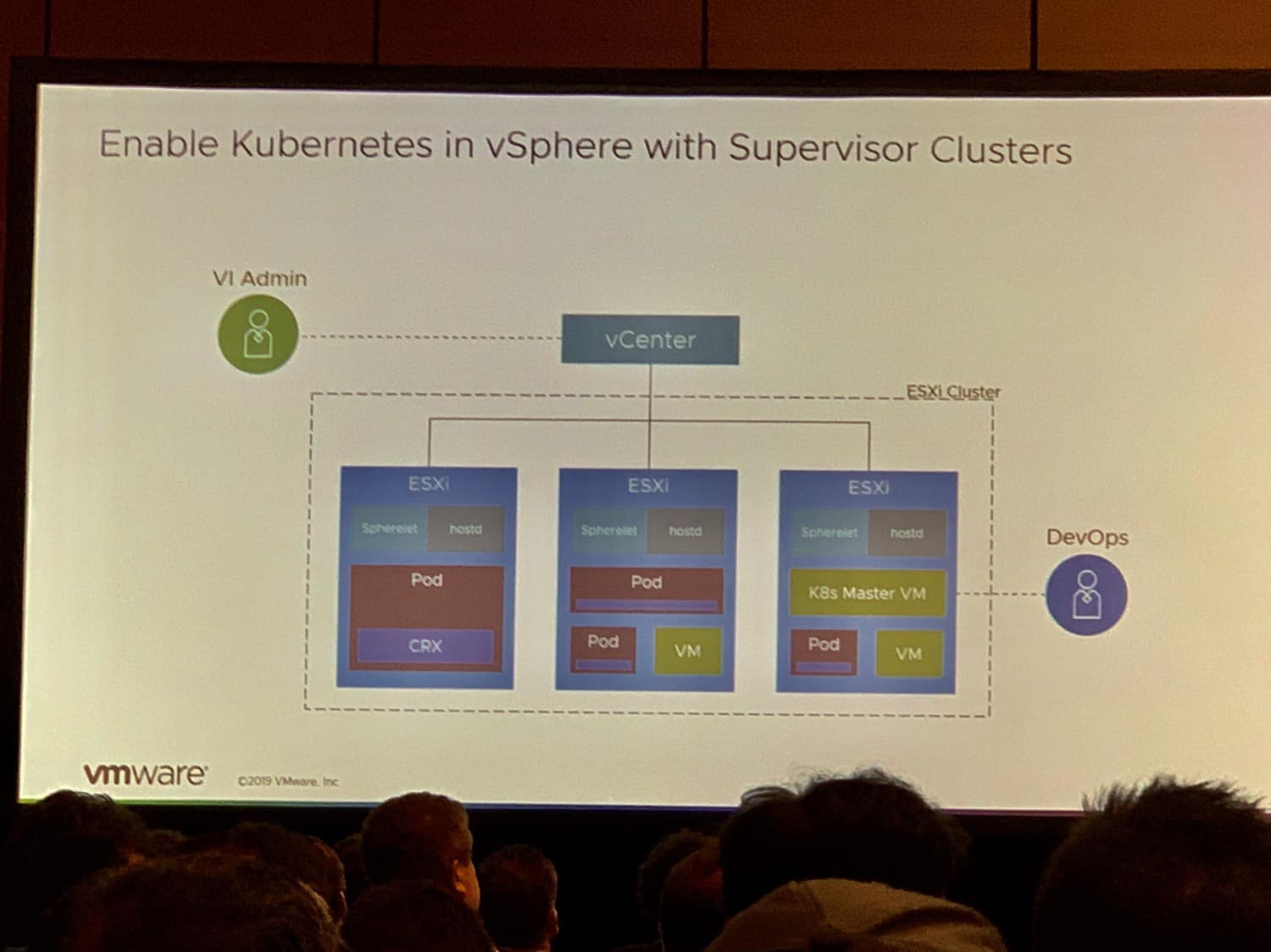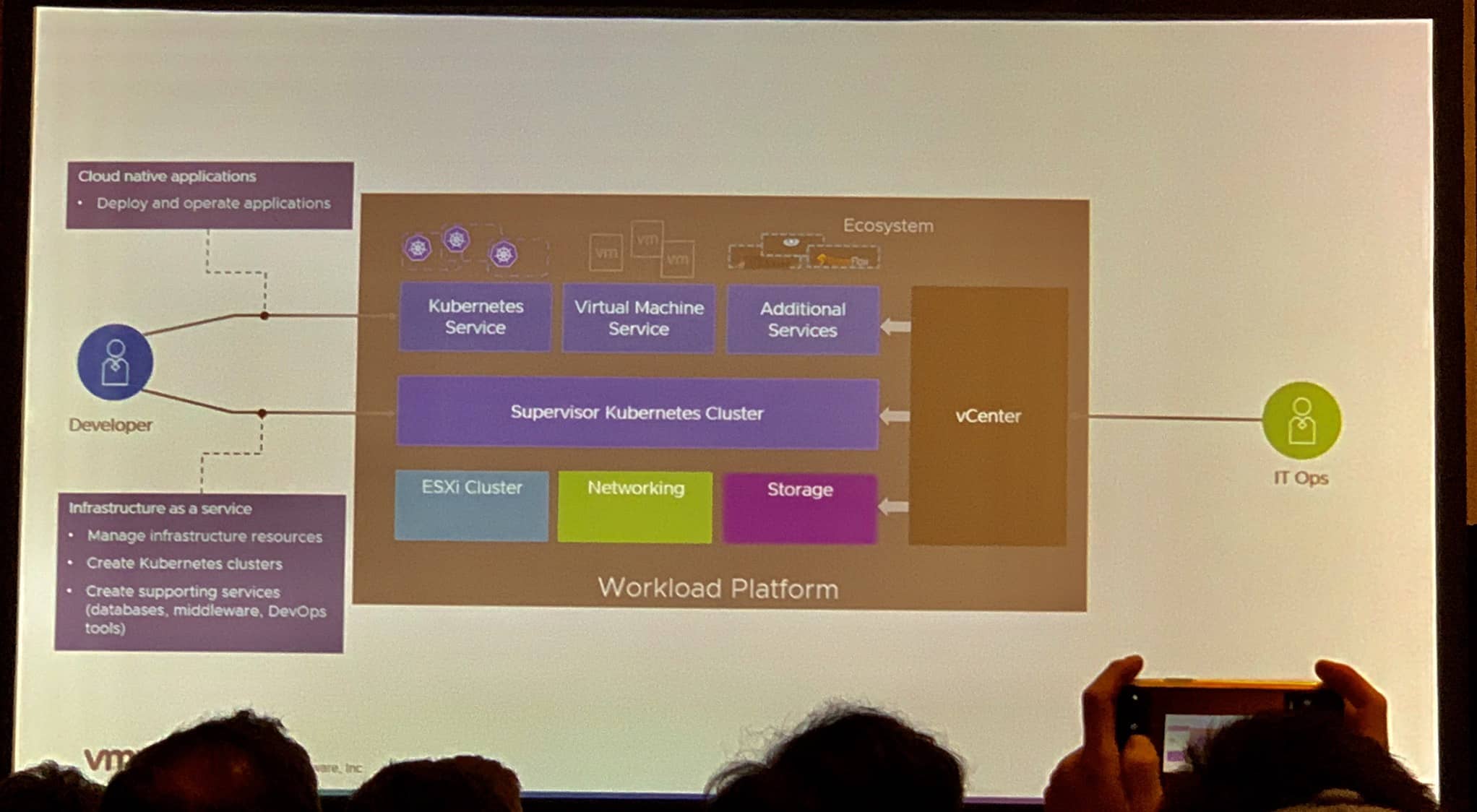Session: HBI4937BU; Kit Colbert
Unifying vSphere and Kubernetes
Modern application deployments are accelerating
More applications and solutions will be deployed in the next 5 years than in the previous 40.
A modern application is complex: Kubernetes cluster, legacy apps, database, serverless.
Challenges for developers and IT Ops from this complexity
Using Kubernetes to Manage Workloads
What if you could manage VMs using Kubernetes?
Namespaces as the Unit of Management. Define:
- QoS
- Security
- Availability
- Access Controls
Project Pacific: Rearchitecting vSphere and Native Kubernetes
-Transforming vSphere into the app platform of the future
-Developer and IT ops collaboration
-Improved economics, speed
vSphere with Kubernetes
-Each ESXi cluster is now also a Kubernetes cluster
-Can provision VMs, PODs, or entire Kubernetes clusters
-DRS does scheduling
-vSphere Native Pods runtime
-Control plane of vSphere
-Deliver Kubernetes cluster as a service for developers
-Converge VMs and containers using vSphere Native Pods that are high performing, secure and easy to consume
Application Focused Management
-App level control for applying policies, quota and role-based access control to developers
-Apply vSphere features (HA, DRS, vMotion) at the app and container level
-Unified visibility in vCenter and Kubernetes clusters, containers, and existing VMs
Dev & IT Ops Collaboration
-Developers use Kubernetes APIs to access the SDDC
-IT Operators use vSphere to deliver Kubernetes clusters to developers
-Consistent view between Dev and Ops via Kubernetes constructs in vSphere
Enable Kubernetes in vSphere with Supervisor Clusters
-Spherelet runs on each ESXi host along next to hostd
-Deploy a POD natively in ESXi
-CRX - optimized runtime for containers
-Can enforce that only signed images can run
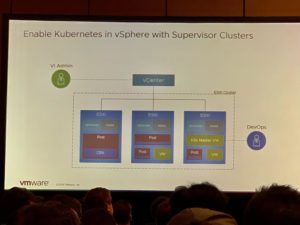
Kubernetes as a Service
-Guest clusters - focused on 100% Kubernetes compliance
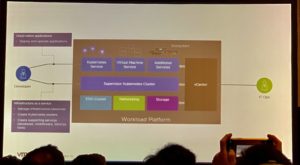
vSphere client has a lot Kubernetes cluster details. It's a first class citizen. Kubernetes events are surfaced in vSphere client.

